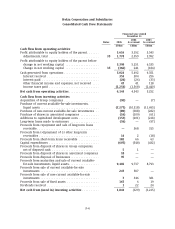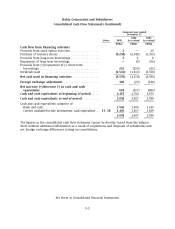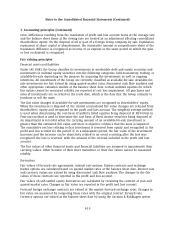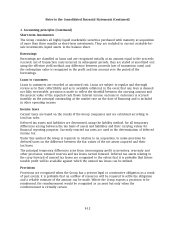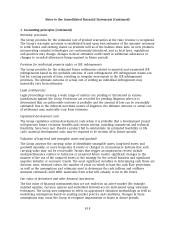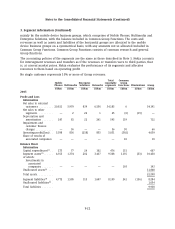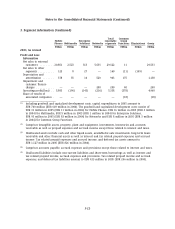Nokia 2005 Annual Report Download - page 152
Download and view the complete annual report
Please find page 152 of the 2005 Nokia annual report below. You can navigate through the pages in the report by either clicking on the pages listed below, or by using the keyword search tool below to find specific information within the annual report.Notes to the Consolidated Financial Statements (Continued)
1. Accounting principles (Continued)
the related liabilities. Actuarial gains and losses outside the corridor are recognized over the
average remaining service lives of employees.
Property, plant and equipment
Property, plant and equipment are stated at cost less accumulated depreciation. Depreciation is
recorded on a straight-line basis over the expected useful lives of the assets as follows:
Buildings and constructions ................................ 20–33 years
Production machinery, measuring and test equipment ........... 1–3 years
Other machinery and equipment ............................ 3–10 years
Land and water areas are not depreciated.
Maintenance, repairs and renewals are generally charged to expense during the financial period in
which they are incurred. However, major renovations are capitalized and included in the carrying
amount of the asset when it is probable that future economic benefits in excess of the originally
assessed standard of performance of the existing asset will flow to the Group. Major renovations
are depreciated over the remaining useful life of the related asset. Leasehold improvements are
depreciated over the lease term or useful life, whatever is shorter.
Gains and losses on the disposal of fixed assets are included in operating profit/loss.
Leases
The Group has entered into various operating leases, the payments under which are treated as
rentals and charged to the profit and loss account on a straight-line basis over the lease terms.
Inventories
Inventories are stated at the lower of cost or net realizable value. Cost is determined using
standard cost, which approximates actual cost, on a first in first out (FIFO) basis. Net realizable
value is the amount that can be realized from the sale of the inventory in the normal course of
business after allowing for the costs of realization.
In addition to the cost of materials and direct labor, an appropriate proportion of production
overheads are included in the inventory values.
An allowance is recorded for excess inventory and obsolescence.
Accounts receivable
Accounts receivable are carried at the original invoice amount to customers less an estimate made
for doubtful receivables based on a periodic review of all outstanding amounts, which includes an
analysis of historical bad debt, customer concentrations, customer creditworthiness, current
economic trends and changes in our customer payment terms. Bad debts are written off when
identified.
Cash and cash equivalents
Bank and cash consist of cash at bank and in hand. Cash equivalents consist of highly liquid
available-for-sale investments purchased with remaining maturities at the date of acquisition of
three months or less.
F-14


